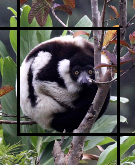One of the most impressive ecological aspects of the Olympic Peninsula is the diversity of habitats found here. The physical structure of the Peninsula has much to do with this diversity. Being located near the sea provides a moderating effect that keeps the climate of our peninsula relatively mild. The stark elevational changes of the Olympic Mountains create the conditions for dramatic shifts in temperature and precipitation patterns as elevation changes. All of these changes happen in relatively short distances.
The plant communities range from the lowland temperate rainforests along the coastal plain (mainly a western hemlock-dominant community), to the mixed conifer forests of higher elevations that have mixed stands of Douglas fir, noble fir, western hemlock and western red cedar, big-leaf maples and red alder. Higher in elevation, the mixed conifer communities shift to one more populated with Alaska yellow cedar, mountain hemlock and Sitka alder. Eventually, once you get to the higher elevations of the Olympics, one enters a near monospecific community of subalpine fir with some Alaska yellow cedar thrown in for balance.
The lower elevations have a range of communities as well. Depending on where you are on the Peninsula, you can have very different conditions. On the west end, the precipitation can range all the way to nearly 200 inches per year near the headwaters of the Hoh and the other river valleys in this region. The forests on this end are dominated be Douglas fir, western red cedar and Selaginella-moss-covered big leaf maples. On the coastal fog-belts of the Peninsula, the Sitka Spruce community dominates.
On the other hand, in the rain-shadow belt of the northeastern stretches of the Peninsula, Garry oak and prairie communities are (or at least were…) common. Along the river habitats of the Peninsula great riparian communities exist with their stands of black cottonwoods and red alders and willow species. Many of the Peninsula's riverine habitats are still wild with only a few dams present. And this is changing! Within the next two years, the two dams on the Ehlwa River will be coming down and a major effort to restore one of North America's most productive river systems will ensue. Can't wait!
All of these communities promote a healthy floral biodiversity which exceeds 1200 species. (Vist our "Flora of the Olympic Peninsula" pages for an idea of the diversity found here)
Click here to visit our Olympic Peninsula image galleries!
